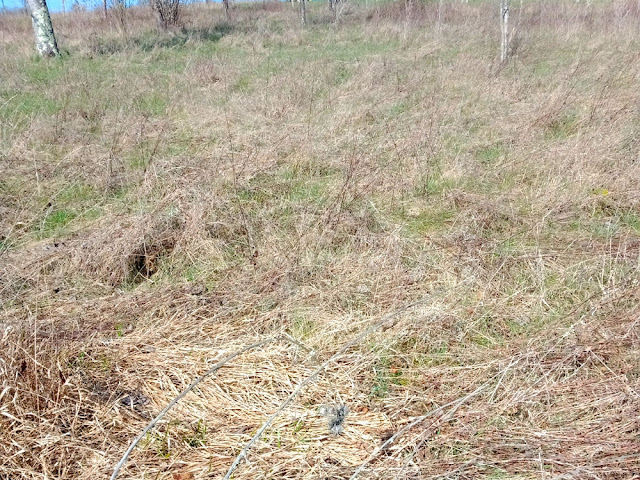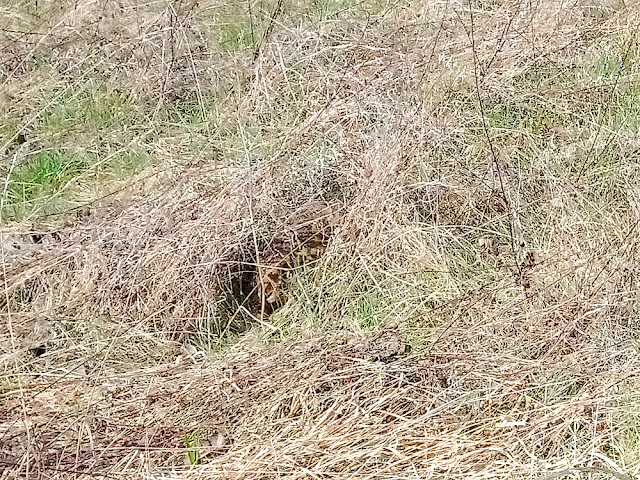Yesterday I had one of those wildlife experiences of a lifetime. I got within a couple of metres of a European Hare Lepus europaeus (Fr. Lièvre d'Europe). It was resting in its form (Fr. gîte), almost invisible. The hare, or a succession of hares, has lived in the orchard for some years, but I have never before got so close. Even when it did choose to break cover it wasn't making its usual turn of speed and didn't go very far. Once I spotted it I didn't dare move my feet, but twisted around slightly and hoped I was aiming the phone camera in the right direction. I was very careful not to maintain eye contact with it but we did exchange a brief glance. It was the most beautiful golden, almost chestnut, brown, with a huge eye and fuzzy nose.
European Hares are nocturnal and timid, living in lowland Europe and grazing on grass, new shoots and bark. They are most visible in early spring, when their mating rituals include frenetic chasing and 'boxing' in the open fields during daylight hours. Their numbers have been declining due to multiple causes that are not entirely understood since the 1960s but they are not considered endangered and it is still legal to hunt them in France. Hares are twice the size of rabbits, and they do not live in burrows, but make 'nests' called forms in long grass, as this one has done. Males and females look very similar and often can't be distinguished in the field. They can weigh up to 4 kilograms and live for 10 years in the wild.
European Hares are probaby native to the Eurasian Steppes, and probably arrived in Western Europe by natural expansion of their range in the Neolithic, when man cleared large swathes of land to create farms. In France they are most abundant in areas like the Beauce and the Berry, which are largely managed for cereal crops, and they are one of the few species that appears to be able to adapt to intensive agriculture as they like open and homogenous habitats.



6 comments:
Are they also present in the British Isles?
CHM Yes but we call them Brown Hares (https://www.wildlifetrusts.org/wildlife-explorer/mammals/brown-hare) Interestingly when in France we very rarely saw one BUT when it snowed there were many many different hare tracks. We do see them in the North West when out walking but not often and never as close as yours.
C&E, thank you for the information and the interesting link.4
We frequently see hares in the fields behind our house. They are beautiful and amazing creatures.
Jean: yes I can imagine they love the fields around your place.
I can see it clearly in these pictures [especially the blow up!]
"but make 'nests' called forms in long grass,".... and that is part of the problem... the joining of fields, as they are doing so much of around here, removes all those little corners where the tractor and equipment found it too difficult to manouver and left that all important patch of long grass.
Now, Eric runs one of the long arm fauchage units all around the edge of the field up by the wood.... cutting it back almost to the forest edge.
Post a Comment